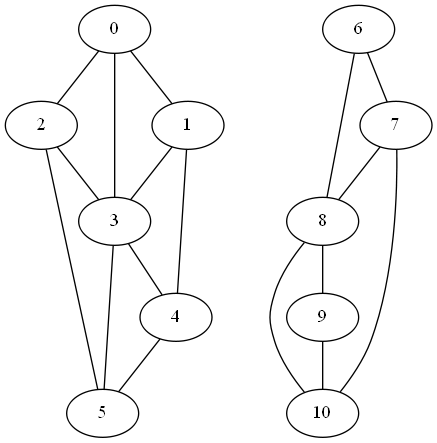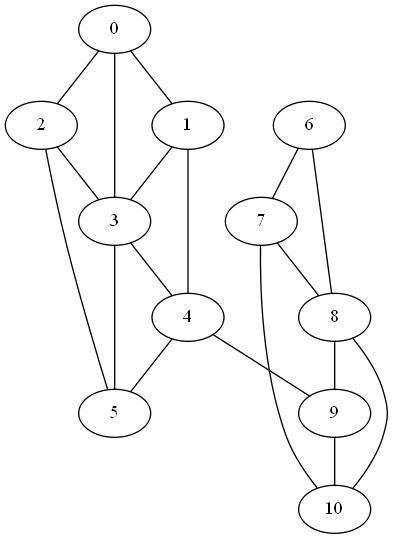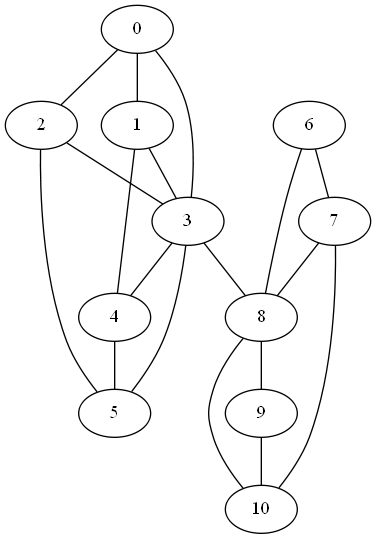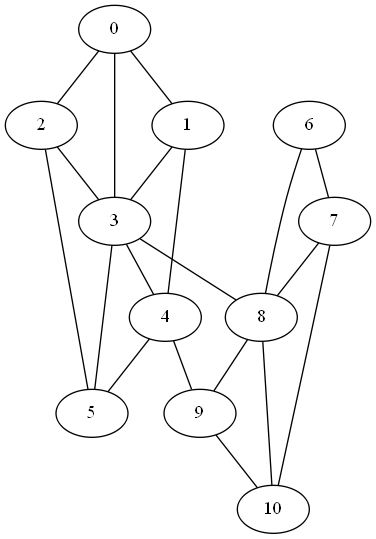Measuring connectivity with graph Laplacian eigenvalues
If a graph can be split into two components with no links between them, that's probably easy to see. It's also unlikely, unless there's a good reason for it. The less obvious and more common case is a graph that can almost be split into two components. Spectral graph theory, looking at the eigenvalues of the graph Laplacian, can tell us not just whether a graph is connected, but also how well it's connected.
The graph Laplacian is the matrix L = D - A where D is the diagonal matrix whose entries are the degrees of each node and A is the adjacency matrix. The smallest eigenvalue of L, I1, is always 0. (Why? See footnote [1].) The second smallest eigenvalue I2 tells you about the connectivity of the graph. If the graph has two disconnected components, I2 = 0. And if I2 is small, this suggests the graph is nearly disconnected, that it has two components that are not very connected to each other. In other words, the second eigenvalue gives you a sort of continuous measure of how well a graph is connected.
To illustrate this, we'll start with a disconnected graph and see what happens to I2 as we add edges connecting its components.

The first two eigenvalues of L are zero as expected. (Actually, when I computed them numerically, I got values around 10-15, about 15 orders of magnitude smaller than the next eigenvalue, so the first two eigenvalues are zero to the limits of floating point precision.)
Next, we add an edge between nodes 4 and 9 to form a weak link between the two clusters.

In this graph the second eigenvalue I2 jumps to 0.2144.
If we connect nodes 3 and 8 instead of 4 and 8, we create a stronger link between the components since nodes 3 and 8 have more connections in their respective components. Now I2 becomes 0.2788.

Finally if we add both, connecting nodes 4 and 9 and nodes 3 and 8, I2 increases to 0.4989.

Related posts:
* * *
[1] To see why the smallest eigenvalue is always 0, note that v = (1, 1, 1, ", 1) is an eigenvector for 0. Multiplying the ith row of D by v picks out the degree of node i. Multiplying the ith row of A by v sums that row, which is also the degree of node i.